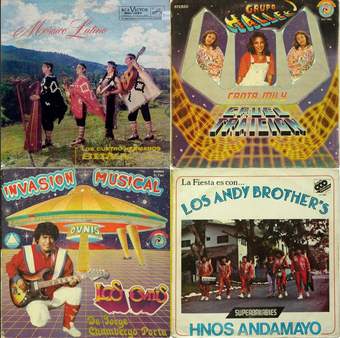9 rooms in Media Networks
What histories are revealed through album covers?
In 2002, Raimond Chaves stumbled across a vinyl record at a flea market in Lima, Peru. An image of his family featured on the record sleeve. The album was produced in the late 1960s by Discos Chaves, a label owned by ChavesŌĆÖ uncle in the city of Pasto, Colombia. The discovery prompted an ongoing search for second-hand records at markets across Latin America, the Caribbean and the United States. On his choice of albums, Chaves notes that he is ŌĆśmore interested in what appears on the covers than in the music they containŌĆÖ.
In El Toque Criollo, ŌĆśThe ŌĆ£CriolloŌĆØ TouchŌĆÖ, Chaves displays these collected record sleeves together with his own commentaries and excerpts of lyrics and political speeches. Arranged in 19 groupings, the artist creates a narrative that addresses subjects including migration, social inequality, gender politics, drug trafficking, guerrilla conflict, art history and the impact of globalisation. ŌĆśMost of the images donŌĆÖt explicitly tell these storiesŌĆÖ, the artist notes, ŌĆśbut still let them be inferred.ŌĆÖ

